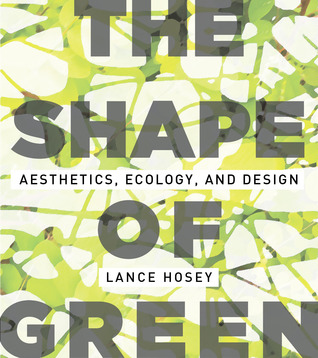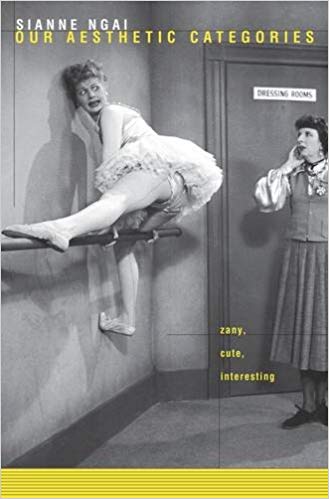
Aesthetics is a strange double branch of philosophy. Now understood mainly as the study of art and beauty, the discipline didn’t actually take up beauty as an object of investigation until the mid-eighteenth century, and the beauty of art in particular until even later. But the major aesthetic categories we have inherited, the sublime and the beautiful, come from a time when viewing art was understood to be a transcendent, sacred, theological experience, entirely separate from and elevated above everyday life. Since then, art and aesthetics have been firmly and persistently decoupled from morality by philosophy and criticism (not to mention art itself); philosophers, deconstructivists, and media theorists have torn down the mystical framework of the sublime and the beautiful in art, but without creating new aesthetic categories in their place.
If two very different theoretical books are to be believed, we ought to start taking seriously the contemporary role of one seemingly trivial aesthetic category: the cute. English professor and literary theorist Sianne Ngai implicates it as central to current problems in our contemporary politics of aesthetics; architect and designer Lance Hosey hopes it can save the planet. In both of their arguments, the role of the cute, and its appeal to our instincts toward consumption and caring, helps answer the question of art’s potential role now that it has left the realm of the sacred and become part of everyday life.
Ngai points out, early in Our Aesthetic Categories, that art is now both desacralized and everywhere, resulting in what she calls a “dialing down of one’s affective response to novelty” and, by extension, to art. She identifies three major trends that call for new categories: the blurring between art and commodity, the bleeding of work into play, and our increasing tendency to share art and aesthetic experiences using information-exchange networks. These respective trends have resulted, she claims, in the dominance of several trivial or “minor” aesthetic categories: the “zany,” the “interesting,” and the “cute.” (For “zany” think of Lucille Ball’s frenetic housewife in I Love Lucy; for “interesting” think of John Baldessari’s “pointing” pictures.)
The cute, for Ngai, is embodied in seductively diminutive commodities, like squishy bath toys: things that create simultaneous feelings of tenderness, affection, and helplessness and pity bordering on disgust. The cute capitalizes on its own weaknesses, providing a perfect model of how retail logic takes up one of our deepest instincts—to nurture—and, by aestheticizing it, turns it into consumerism. It is thus, Ngai argues, a logical conclusion par excellence to Marx’s commodity fetish. The concept of cuteness rounds out Ngai’s trinity of cultural production, circulation, and consumption, which has much to say about the aesthetic importance of our daily experience in the world. The zany manifests in the ways we’re all so tired of performing all the time, the interesting in our constant pressure to share things that will hold others’ attention, and the cute in a social-media culture awash in kittens, re-pinned photos of lattes, and limp memes.
In The Shape of Green, Lance Hosey is as utopian as Ngai is grimly materialist about the cute and its effect on us. If we make ethical consumer options more appealing, he explains—in his book, such options amount to sustainable design—those things stand a better chance of achieving widespread popularity, since we care for that to which we are drawn aesthetically. Hosey describes how the cute and its aesthetically pleasing counterparts act on us through what he calls “the aesthetic imperative”: we treat things with more tenderness and thoughtfulness when they appeal to our instinctual desire to seek beauty and, in the case of the cute, to nurture. He doesn’t argue that everything should “look like babies and puppies”; he merely calls for design that instills “greater attention, fondness, and respect for our surroundings” in order to “bring out the caretaker in all of us.”
The Shape of Green is an attempt to bring into being and to organize a coherent set of rules for a category not yet in existence: an aesthetics of sustainability, as it might be used in the fields of architecture and design. More than just bringing style to the green movement (which is seen in those fields as dowdy and unglamorous) through “green bling” like planted rooftops, Hosey would have us use the power of aesthetic experience to bolster our relationship to nature and take more responsibility for it, the way we would for other things that are cute, ergo vulnerable and relatively powerless compared to us.
But as The Shape of Green shows, being uncritically positive about the cute and its power over us can hide—and create—real political problems. To wit, many of Hosey’s calls to action are abstract and slippery; even his definition of sustainability drifts between real ecological commitment and a more metaphorical ecology, such as when he argues that built environments and the natural one are at equal risk of devastation, or that cities ought to grow organically rather than being planned. Sometimes he seems almost deliberately wide-eyed, like when he calls for an end to the planned obsolescence of laptops without addressing the imperative of capitalism to keep innovating and producing new things. Green design cannot be immune from this drive, after all, and thus The Shape of Green serves, sometimes naïvely, as a counterpoint to Ngai’s deeper criticism about how deeply markets drive into aesthetics today. The cute can be a magnet for better choices, but it’s still fundamentally based in a politics of consumerism.
Indeed, cuteness in contemporary culture can be used to harness the deeply ingrained instincts that draw us to grasp that which is vulnerable, weak, and sweetly appealing; whether this emotional-aesthetic complex of reactions will create ambivalent experiences or meaningful political choices is a matter of context. While Ngai argues that the cute, as an aesthetic category, lacks “any of the links to morality—indirect or direct—repeatedly ascribed to the judgment of the beautiful,” Hosey gives at least one way in which the cute can be part of an ethical politics. But, for better or for worse, the dialogue between their ideas shows that even trivial categories are surprisingly revealing of art’s role in our social and political decisions, and vice versa.





